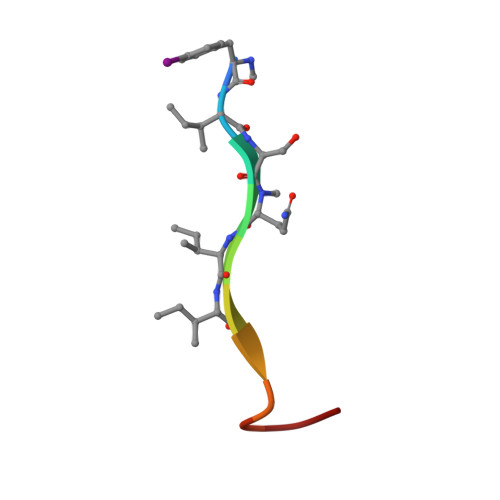X-ray Crystallographic Structure of a Teixobactin Derivative Reveals Amyloid-like Assembly.
Yang, H., Wierzbicki, M., Du Bois, D.R., Nowick, J.S.(2018) J Am Chem Soc 140: 14028-14032
- PubMed: 30296063
- DOI: https://doi.org/10.1021/jacs.8b07709
- Primary Citation of Related Structures:
6E00 - PubMed Abstract:
This paper describes the X-ray crystallographic structure of a derivative of the antibiotic teixobactin and shows that its supramolecular assembly through the formation of antiparallel β-sheets creates binding sites for oxyanions. An active derivative of teixobactin containing lysine in place of allo-enduracididine assembles to form amyloid-like fibrils, which are observed through a thioflavin T fluorescence assay and by transmission electron microscopy. A homologue, bearing an N-methyl substituent, to attenuate fibril formation, and an iodine atom, to facilitate X-ray crystallographic phase determination, crystallizes as double helices of β-sheets that bind sulfate anions. β-Sheet dimers are key subunits of these assemblies, with the N-terminal methylammonium group of one monomer and the C-terminal macrocycle of the other monomer binding each anion. These observations suggest a working model for the mechanism of action of teixobactin, in which the antibiotic assembles and the assemblies bind lipid II and related bacterial cell wall precursors on the surface of Gram-positive bacteria.
Organizational Affiliation:
Department of Chemistry , University of California, Irvine , Irvine , California 92697-2025 , United States.
















